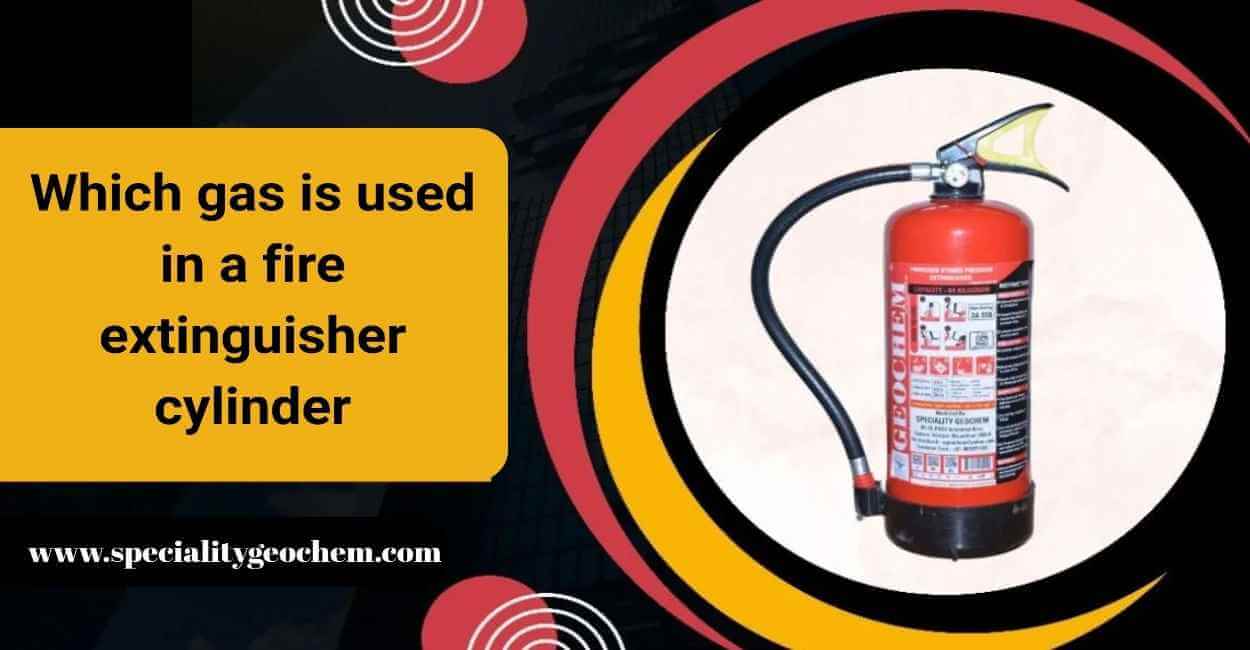Fire extinguishers are essential safety devices found in homes, offices, factories, schools, and public places. They are designed to tackle different types of fires quickly before they spread and cause major damage. While fire extinguishers may look similar from the outside, the gas or chemical agent inside them can differ based on the type of fire they are intended to fight.
One of the most common questions people ask is – “Which gas is used in a fire extinguisher cylinder?” The type of gas inside a fire extinguisher varies based on its design and intended use. In this article, we’ll break down the different gases, their characteristics, practical uses, and the importance of selecting the right option for effective fire safety.
Why selecting the correct gas in a fire extinguisher is crucial
Not all fires are the same. Fires are classified into categories (A, B, C, D, K/F) based on the fuel source. Using the wrong extinguishing agent can make the fire worse instead of putting it out. For instance, spraying water on an electrical fire can lead to electric shock, while attempting to put out a metal fire with a foam extinguisher may fail to control the flames.
The gas inside a fire extinguisher plays a crucial role because it:
- Displaces oxygen to suffocate the flames.
- Cools down the burning material.
- Interrupts the chemical chain reaction in the fire.
- Prevents re-ignition.
Which gas is used in a fire extinguisher cylinder?
The most widely used gases in fire extinguisher cylinders are:
1. Carbon Dioxide (CO₂)
Carbon dioxide is one of the most common gases used in fire extinguishers, especially for Class B (flammable liquids) and Class C (electrical) fires.
Key properties:
- Non-conductive and safe for electrical equipment.
- Displaces oxygen to smother the flames.
- Leaves no residue after use.
Applications:
- Offices, server rooms, laboratories, and industrial areas.
- Ideal for fires involving petrol, diesel, kerosene, and electrical panels.
2. Nitrogen (N₂)
Nitrogen is often used as a pressurizing agent in certain types of fire extinguishers, particularly in dry chemical powder extinguishers.
Key properties:
- Inert gas, non-reactive with fire suppression agents.
- Maintains stable pressure inside the cylinder.
- Non-toxic and safe in controlled amounts.
Applications:
- Dry chemical powder extinguishers for Class A, B, and C fires.
- Used in industrial and commercial fire suppression systems.
3. Clean Agents (Halocarbon gases like FM-200 or FE-36)
Clean agent gases are widely used in modern fire suppression systems where sensitive equipment needs protection. These gases are stored as liquids but vaporize when discharged.
Key properties:
- Safe for electronics and valuable documents.
- Rapid fire suppression without water damage.
- Ozone-friendly alternatives to older halon systems.
Applications:
- Data centers, museums, archives, control rooms.
4. Halon (now mostly replaced)
Halon was once a popular fire suppression gas due to its efficiency. However, it has been phased out in many countries due to its ozone-depleting properties, except in specific applications like aircraft fire suppression.
Key properties:
- Very effective in stopping chemical chain reactions in fire.
- Non-conductive and residue-free.
How the gas works to extinguish a fire
A fire can only sustain itself when three key elements are present—heat, fuel, and oxygen—together referred to as the fire triangle. The gases used in fire extinguisher cylinders target one or more of these elements:
- CO₂ removes oxygen from the fire zone.
- Nitrogen pressurizes dry chemical powder to coat the fuel.
- Clean agents stop the fire’s chemical reaction while ensuring no harm comes to the surrounding property.
Factors to consider when selecting a gas-based fire extinguisher
When choosing the right gas for a fire extinguisher cylinder, consider the following:
- Type of fire hazard – Identify whether it’s electrical, flammable liquid, or combustible solid.
- Environment – For enclosed spaces, ensure the gas used does not reduce oxygen to dangerous levels for people.
- Residue concerns – For electronics or documents, use gases that leave no residue.
- Maintenance and refilling – Choose cylinders that can be easily refilled and serviced.
Benefits of CO₂-based extinguishers
- No damage to electrical devices.
- No cleaning required after use.
- Highly effective for small to medium-sized fires.
Benefits of clean agent gases
- Safe for sensitive electronics.
- Environmentally friendly options available.
- Quick suppression with minimal downtime.
Safety precautions when using gas-based fire extinguishers
While gas fire extinguishers are effective, safety measures should always be followed:
- Avoid direct inhalation of discharged gas.
- Keep a safe distance from the flames.
- Ensure proper training on how to operate the extinguisher.
- Use in well-ventilated areas if possible.
Conclusion
When it comes to fire safety, knowing which gas is used in a fire extinguisher cylinder can help you choose the right type of extinguisher for your needs. Carbon dioxide, nitrogen, and clean agent gases are among the most common, each serving specific purposes. Selecting the right gas not only ensures effective fire suppression but also protects property and lives.
At Speciality Geochem, we offer high-quality, ISI-certified fire safety solutions tailored to different environments. Our fire extinguisher cylinders are designed for reliability, safety, and ease of use, giving you peace of mind in any fire emergency.

